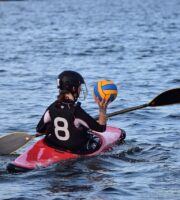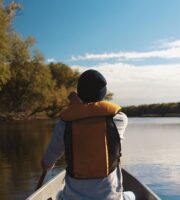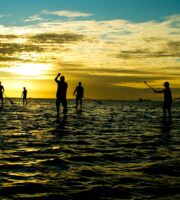Canoe Polo Syracuse 2016 is one of the largest canoe polo tournaments in the United States. It was held on June 3-5 and was an exciting event for all participants. The tournament features teams from across the country competing in a full round-robin format with semi-final and final matches determining the champion. Sportsmen were divided into divisions to ensure the fairest competition possible. Canoe Polo Syracuse 2016 was an incredible event that all athletes will remember for a lifetime.
The tournament is sponsored by the U.S. Canoe and Kayak Federation, along with local sponsors including Syracuse University, Onondaga Lake Park, and Oswego County. These sponsors are committed to making Canoe Polo Syracuse 2016 a memorable and successful event for participants, spectators, and fans alike.
History of the sport
The origins of competitive canoeing can be traced back to the early 20th century and the birth of racing as a popular sport. The first international competitions were held in 1923 when Great Britain and France faced off at an event in Paris. Since then, competitive canoeing has grown rapidly in popularity throughout Europe, North America, and beyond. Today, it is a major sport in many countries and there are numerous international events held every year. Competitions include both sprint and slalom races, as well as downriver events such as white-water racing and the classic marathon. Races are typically conducted in kayaks, canoes, or outrigger boats depending on the type of event. It is an exciting and rapidly-growing sport that continues to draw in new fans from around the world.
Training, training, training
As with any competitive sport, athletes strive for excellence in order to become the best of the best. This means lots of practice on the water, physical training to build strength and endurance, and mastering technique. Many canoeists also work to refine their skills in order to stay ahead of the competition. At international events, the best paddlers come together to show off their talents and push each other to improve. It is this spirit of friendly contest that has kept canoeing alive for nearly a century and which will continue to propel it into the future.
From novice beginners to experienced professionals, all canoeists can enjoy the thrill of competition. With some dedication and hard work, anyone has the potential to become an accomplished paddler. So whether you’re a beginner or a seasoned racer, head out on the water and join in the fun!
Prospects for canoeing as a sport
This is an activity that will continue to grow and develop in the future. With more people discovering the joys of being on the water, more sportsmen will be looking for ways to explore their local waterways and make the most out of nature’s offerings. The advancements in technology are making it possible for canoeists to access more areas where previously it was difficult or dangerous to do so. They are also able to discover new ways of the activity such as using inflatable canoes, sea kayaks, and more.
In the future, canoeing will continue to develop into a sport that is both challenging and enjoyable for people of all ages and abilities. As new materials, designs, and technology become available, canoeists will be able to discover new ways of exploring their local waters. They will also have access to more remote locations as safety equipment and navigation tools improve. This is an environmentally-friendly sport that allows individuals to explore the outdoors in a safe and responsible way. With the right gear and safety protocols in place, canoeists can enjoy a day out on the water without damaging or disturbing their surroundings. Canoeists are also becoming more aware of how to enjoy their time on the water responsibly, taking care to minimize their impact on nature.
As canoeing continues to grow in popularity, more and more people are finding themselves drawn to the sport. Whether it is for leisure, competition or exploration, canoeing provides a unique way of connecting with nature and discovering new places. With the right guidance and safety protocols in place, novice paddlers can quickly gain the skills needed to get out on the water and explore what lies beyond their home waterways.
The future of canoeing looks promising for those looking for adventure and a unique way to explore the outdoors. With access to new technologies, paddlers can enjoy more remote destinations with greater ease and safety. Canoeists are also becoming more aware of their impact on nature, understanding how to respect the environment while maximizing the enjoyment of their time on the water. Paddlers are taking steps to minimize their impact and help conserve their local waterways. With all of these trends, the future of canoeing looks bright and full of possibilities.







